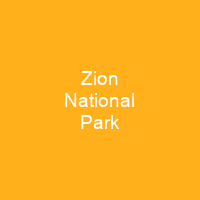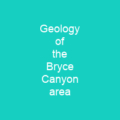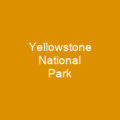Zion National Park: A Marvel of Nature’s Artistry
Imagine stepping into a world where towering sandstone cliffs and lush greenery coexist in harmony, all under the vast expanse of the Utah sky. Welcome to Zion National Park, a breathtaking sanctuary that has captivated visitors for over a century. How can such a place exist, you might wonder?
The Geology of Zion
Zion’s unique landscape is a testament to millions of years of geological processes. The park features nine exposed geologic formations representing about 150 million years of sedimentation. These layers were deposited in different environments, from warm shallow seas to vast deserts, and have been uplifted over 10,000 feet higher than where they were originally laid down. Isn’t it fascinating how these ancient stories are etched into the very rocks we see today?
The Four Life Zones
Zion’s diverse ecosystems can be divided into four life zones: desert, riparian, woodland, and coniferous forest. Each zone supports a unique mix of flora and fauna, creating a rich tapestry of biodiversity. How do these different environments interact to support such a wide array of species?
The History of Zion
The first human presence in Zion dates back to 8,000 years ago when family groups camped where they could hunt or collect plants and seeds. Over time, the area was settled by various Native American tribes before Mormon farmers arrived in the mid-19th century. What stories do these ancient campsites hold?
The Naming Controversy
The name ‘Zion’ replaced the original ‘Mukuntuweap’ due to its appeal to an ethnocentric audience, reflecting a complex history of cultural and political influences. How does this renaming reflect broader issues in American history?
The Establishment of Zion National Park
Zion was designated as a national monument in 1909 and became a national park in 1919, with the name change from Mukuntuweap. The area has been protected through various legislative acts, including the Omnibus Public Land Management Act of 2009, which designated over 85% of the park as the Zion Wilderness. What does this history tell us about conservation efforts in America?
The Visitor Experience
Zion National Park offers a myriad of experiences for visitors. From scenic drives and hiking trails to guided tours and nature programs, there’s something for everyone. The park is accessible year-round by shuttle bus or private vehicle, with the exception of the Kolob Terrace Road during winter months. How do you plan your visit to Zion?
The Geology in Detail
The formations exposed in the Zion area were deposited in different environments, including warm shallow seas, streams, ponds, and lakes, as well as vast deserts. Uplift affected the entire region, raising the formations more than 10,000 feet higher than where they were originally laid down. Can you imagine what this landscape looked like millions of years ago?
The Wildlife
Zion is home to a diverse mix of plants and animals, including 289 bird species, 79 mammals, 28 reptiles, 7 fish, and 6 amphibian species. The park’s varied topography and differing soil types provide habitat for these diverse organisms in four life zones: desert, riparian, woodland, and coniferous forest. How do you think the different life zones contribute to the overall ecosystem?
The Future of Zion
Zion National Park continues to evolve with modern challenges such as climate change and increased visitation. The park has implemented measures like a public transportation system to address traffic congestion, and backcountry camping requires permits. What steps do you think should be taken to ensure the preservation of this natural wonder?
Zion National Park: A Natural Wonder
Zion National Park is more than just a collection of rocks and plants; it’s a living, breathing testament to nature’s artistry. From its ancient geology to its diverse wildlife, Zion offers a unique glimpse into the natural world. Will you be the next to explore this incredible place?

You want to know more about Zion National Park?
This page is based on the article Zion National Park published in Wikipedia (retrieved on January 23, 2025) and was automatically summarized using artificial intelligence.







